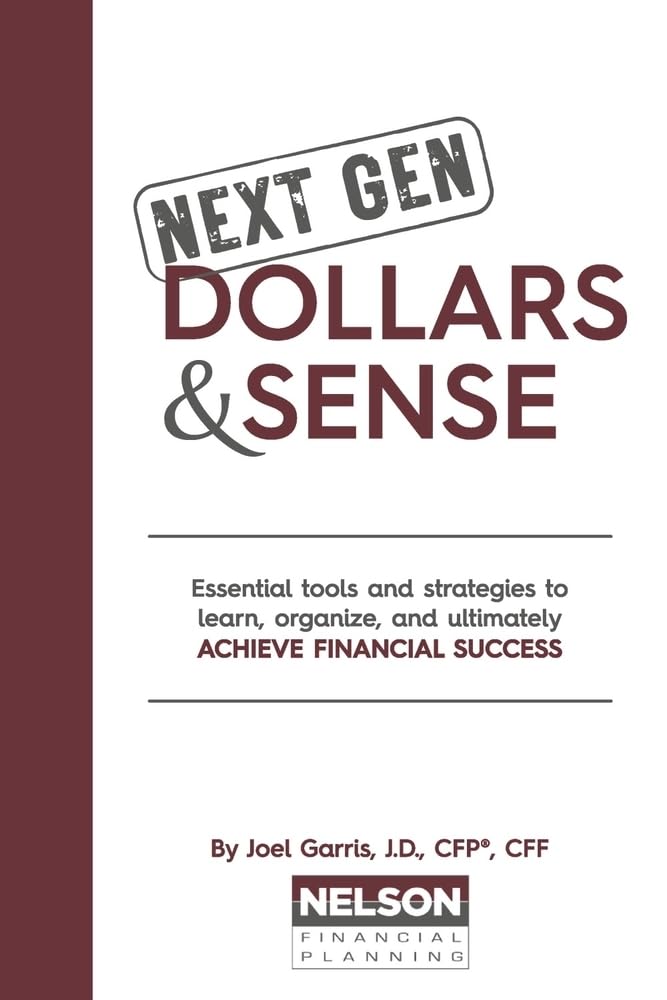Navigating the Investment Landscape: A Comprehensive Guide
Do you know what kind of investor you are? How do you plan to reach retirement with enough money to live the lifestyle you want?
Embarking on the journey of building an investment portfolio can feel like setting sail into uncharted waters. With a myriad of options and strategies available, it’s essential to chart a course that aligns with your financial aspirations and risk tolerance.
This guide delves into the four fundamental components of crafting a robust investment portfolio, offering insights to help you navigate the complexities of the financial world. It’s a full-circle conversation that will take you from your early days of investing to your later years in retirement.
The 4 Fundamental Components of Crafting a Robust Investment Portfolio
- Establishing your investment objective
- Knowing what you should invest in
- Deciding how to fund your investments
- Generating income from your investments
1. Establishing Your Investment Objective
Before diving into the vast ocean of investment opportunities, it’s imperative to anchor yourself with a clear investment objective. This foundational step involves introspection and planning, ensuring that your financial goals are both realistic and attainable.
This is where you set your goals and start your plan.
Risk Tolerance:
Understanding your comfort level with market fluctuations is crucial. Are you someone who can weather the storms of market volatility without losing sleep, or do you prefer a steadier, more predictable growth trajectory? Assessing your risk tolerance helps in selecting investments that won’t keep you up at night.
If you’re unsure of your risk tolerance, search for online questionnaires to help you assess your stance. A popular option is the global portfolio allocation scoring system (PASS). This provides a series of statements that you respond to with “strongly agree,” “strongly disagree,” or something in between. Your score reveals your risk tolerance, giving you a good place to start when establishing your investment objective.
Time Horizon:
Consider the timeframe within which you aim to achieve your financial goals. Are you investing for a short-term objective, like purchasing a home in the next few years, or are you focused on long-term goals, such as retirement decades down the line? Your time horizon will significantly influence your investment choices.
A longer time horizon, such as saving for retirement starting in your 20s or 30s, allows you to take on more risk. Reassess your time horizon every few years as you approach retirement to ensure it still aligns with your investment objective.
Performance Expectations:
Set realistic expectations regarding the returns on your investments. While everyone hopes for substantial gains, it’s essential to understand the historical performance and potential of your chosen investment vehicles.
Having reasonable performance expectations means you understand the likely yield, rate of return, and capital gains and losses of your investments. If you’re sitting in cash and expect your portfolio to generate a certain income or grow to a certain level over time, you’ll end up disappointed. You have to accept some risk to get the performance you want.
On the other hand, if you’re in a very aggressive portfolio and expect a steady income, you’ll end up disappointed. You must be willing to accept major swings in your balances and know that you might not always get the timing right when making withdrawals.
2. Knowing What You Should Invest In
With a clear objective in mind, the next step is to explore the various investment avenues available. Diversification is key to mitigating risk and enhancing potential returns.
One size doesn’t fit all, so discuss your various investment options with a trusted financial advisor. Here’s a look at the three basic types of investments.
Stocks:
Representing ownership or equity interest in a company, stocks offer the potential for growth through dividend payments, stock price growth, or both. They can be categorized 3 ways:
- Growth stocks – companies expected to grow at an above-average rate compared to their industry peers.
- Value stocks – companies that appear undervalued based on fundamental analysis.
- Blended stocks – a combination of both growth and value characteristics.
Bonds:
Bonds, essentially loans made to corporations or governments, provide regular interest payments and are generally considered less risky than stocks. They are issued by governments and corporations to generate cash and serve as a stabilizing force in a diversified portfolio. . Buying a bond lends money to the issuer, who agrees to repay the principal plus interest over a specified amount of time. Return rates are relatively low but fluctuate less, making bonds a good short- and intermediate-term investment.
Mutual Funds and ETFs:
These pooled investment vehicles allow investors to own a diversified portfolio of stocks, bonds, or other assets. Managed by professionals, they offer an accessible way to achieve broad market exposure. Because they are more diversified, they are considered less risky than buying individual stocks or bonds.
3. Deciding How to Fund Your Investments
Accumulating the capital to invest is a pivotal aspect of portfolio building. This involves disciplined saving and strategic allocation of resources.
Once you know your objective and what you want to invest in, it’s time to start saving. Here are the four steps of funding an investment account.
Set Clear Savings Goals:
Most people want the same standard of living once they retire. Determine how much you need to save to reach your investment objectives. Break down these goals into manageable, periodic savings targets.
To make sure you have enough money, first consider your current gross salary. Then, subtract the following:
- Social Security taxes
- Medicare taxes
- 401K contributions
- Deferred compensation plan contributions
- Social Security benefits
- Pensions
- Other sources of income besides your gross salary
You now know how much income you need your portfolio to generate to maintain your standard of living after retirement. Now it’s just a quick calculation of how much you have saved, how much you’re saving annually, and how many years you have until retirement.
Create a Budget:
As a general rule, it’s wise to save 10% to 13% of your gross salary for retirement. If you’re close to retirement age and your portfolio isn’t in good shape, consider changing your goals. Maybe push out retirement a few years or lower your anticipated retirement income expectations
Choose the Right Accounts:
Depending on your goals, select appropriate investment accounts. For retirement, consider tax-advantaged accounts like 401(k)s or IRAs. For other goals, taxable brokerage accounts might be suitable.
There are two general categories—retirement accounts and regular investment accounts. The best ones for you depend on your employment situation, desired contribution amounts, and tax implications. Your options include:
- Employer-sponsored retirement savings, including 401K, 403B, and 457 plans
- Individual Retirement Accounts (IRAs)
- Brokerage accounts
- Certificates of Deposit (CDs)
- Other traditional investment accounts
Determine How and When to Invest:
When it comes to funding your accounts, it’s all about the time in the market, not timing the market. In other words, saving consistently over a longer period provides a more favorable outcome than trying to catch up later in life.
Automate Your Savings:
Setting up automatic transfers to your investment accounts can help maintain consistency and discipline in your saving habits.
4. Generating Income from Your Investments
The most exciting part of saving for retirement is the chance to make your investments work for you. As your portfolio matures, you may seek to derive income from your investments, especially during retirement.
Before you retire, assess all your retirement assets and figure out a comfortable withdrawal rate, preferably at around 4 %, to ensure your savings last. Remember, part-time work can help supplement your retirement income if you haven’t saved enough.
Dividend-Paying Stocks:
Investing in companies that regularly distribute a portion of their earnings to shareholders can provide a steady income stream.
Bond Interest Payments:
Holding bonds means you’ll receive periodic interest payments, contributing to your income.
Systematic Withdrawl Strategies:
Implementing a structured plan for withdrawing funds from your portfolio can help ensure that your savings last throughout your retirement years.
Social Security and Pensions:
Incorporate any expected benefits from social security or pensions into your income strategy, adjusting your withdrawls accordingly.
Follow these four steps to generate the ideal income from your portfolio:
- Analyze your savings. How much have you saved?
- Review your goals. How do you want to live in retirement?
- Develop a budget. How will you utilize your savings?
- Determine your desired income. How much income do you want, and how much can you get?
FINAL THOUGHTS.
Building a well-rounded investment portfolio requires careful planning, continuous education, and periodic reassessment. By understanding and implementing these four basic components—establishing clear objectives, selecting appropriate investments, funding your portfolio diligently, and strategizing income generation—you set the foundation for financial growth and security.
Remember, the investment landscape is ever-evolving; staying informed and adaptable is key to navigating its complexities successfully.
For expert financial guidance, contact Nelson Financial Planning today!

TAKE CONTROL OF YOUR FINANCES.
Unlock the secrets to financial success with Joel J. Garris’ insightful book, designed to equip you with the essential tools and strategies needed to take control of your financial future.
REQUEST YOUR FREE COPY OF OUR BOOK – NEXT GEN DOLLARS & SENSE
At Nelson Financial Planning, we can help you change your life with a successful financial plan that provides peace of mind for the future. We help clients of all ages and income levels maximize their retirement accounts using today’s best investment strategies. To learn more, please contact us online or call our Orlando FL financial planning office at 407-307-3061.
ABOUT JOEL GARRIS
Joel J. Garris, JD, CFP®, is the President and CEO of Nelson Financial Planning and the voice behind the Dollars & Sense podcast. A seasoned financial advisor with over 20 years of experience, Joel helps everyday investors make sense of complex markets with clarity and confidence. When he’s not simplifying retirement strategies or decoding economic trends, he’s probably on air delivering straight-talk financial advice—no fluff, just facts.

References:
- 8 Wonders1
- Bank Investments3
- Beating Inflation1
- Budget for Retirement3
- Corporate Transparency Act2
- Digital Currency1
- Energy Tax Credits1
- ESG Funds1
- Featured Blog0
- Financial Planning10
- Financial Success3
- Importance of Dividends2
- Investment Portfolio5
- Investment Strategy2
- IRA1
- Joel Garris1
- Nelson Financial Planning5
- Net Worth Improvement1
- Next Gen Dollars and Sense1
- Pension Plans1
- Retirement “Secure” Act2
- Retirement Planning2
- Retirement Regrets4
- Social Security3
- Tax Liability3
- Tax Planning6
- Year-End Tax Changes3






